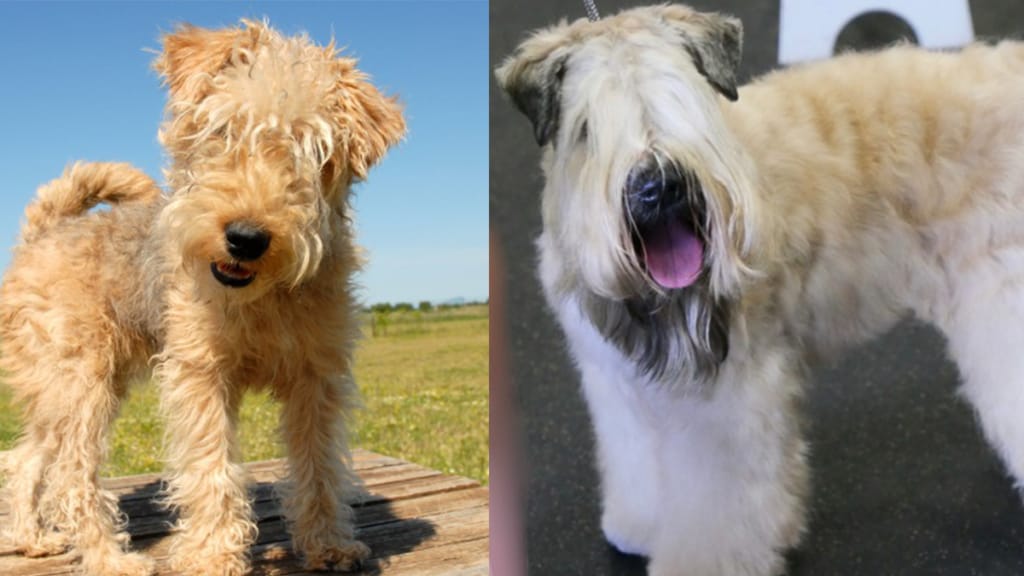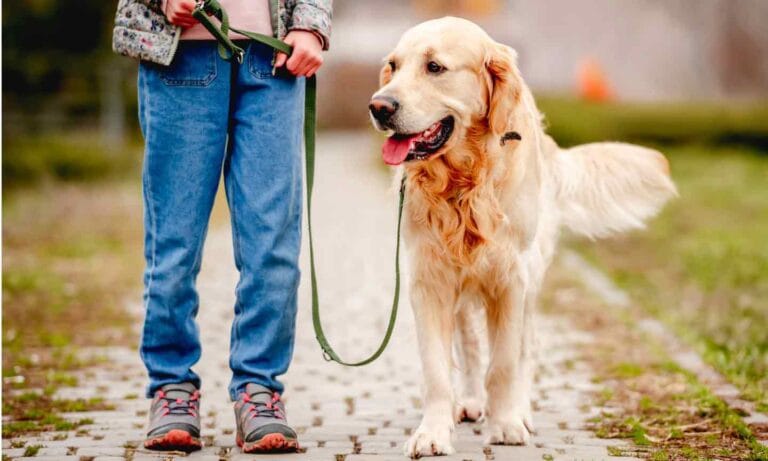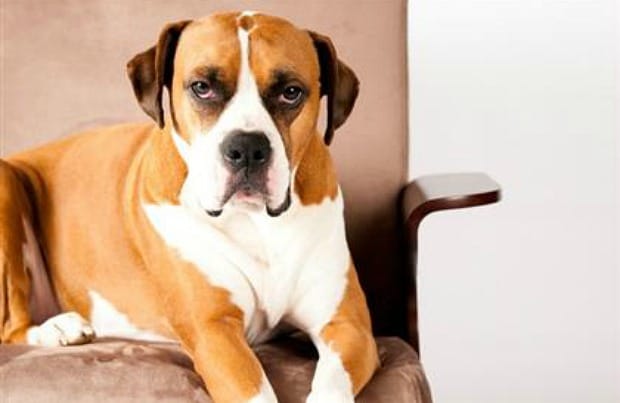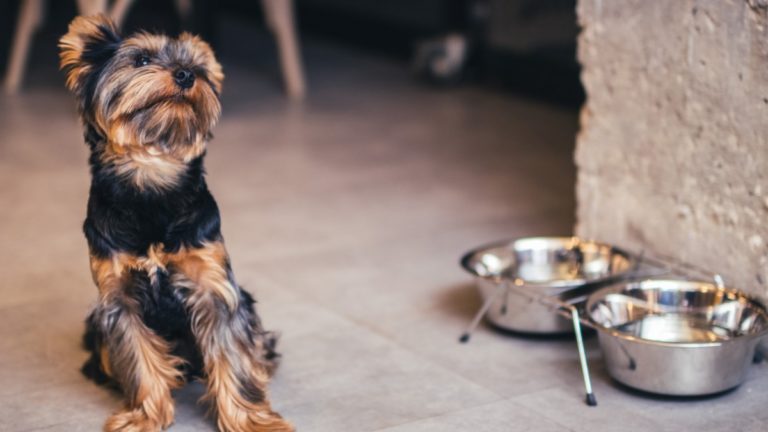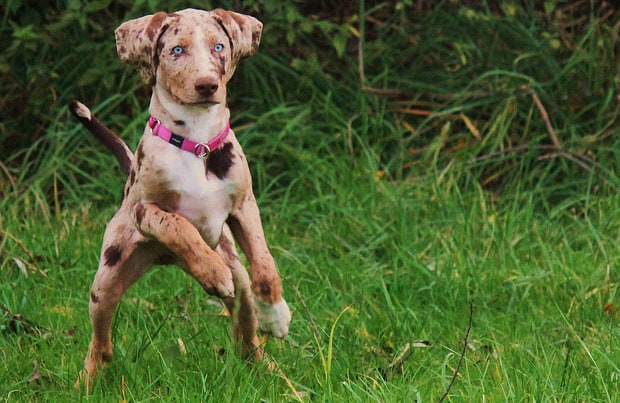History
With these tasks, gameness was the top priority among the early breeders. Lakelands needed to be game enough to withstand the punishment delivered by the foxes in their rocky mountain lairs. Here hunting was done on foot, as the foxes were found in crevices or in rocky tunnels along the hillsides.
The Welsh had to possess the characteristic gameness required while showing spirit and courage when facing the badger, otter and fox. In Wales, hunting was done on horseback along with the hounds where the fox was found in the ground.
Around 1830, these northern counties had many varieties of Terriers each named after the locality with the greatest numbers. Cumberland is the birthplace of the Lakeland, and in 1912, a meeting of Fell Terrier breeders was called at Keswick, and the name Lakeland Terrier was given to the improved types being shown in the Lake District. After WWI, fanciers met in 1921 in Cumberland, had a standard drawn up, and the breed became eligible for registration in the Kennel Club (England). AKC first recognized Lakeland Terriers in 1934.
Welsh Terriers were first recorded in England at the Caernarvon show in 1884-1885. At that time, it was not uncommon for dogs to be shown as Old English Terriers and also as Welsh Terriers.
In 1886, the Welsh Terrier Club of Great Britain was formed, making it the oldest club representing the Welsh Terrier. A pair of Welsh first arrived on these shores in 1885, and a later account mentions a dog and bitch brought to the US by Prescott Lawrence in 1888 that were shown at the old Madison Square Garden in the Miscellaneous Class. The Welsh Terrier Club of America was founded in 1900.
Size and Proportion
The Lakeland Terrier ideally should stand 14 1/2 inches from the withers to the ground with bitches measuring as much as 1 inch less than dogs. In hard working condition, the weight of a mature dog is approximately 16 to 17 pounds. Balance and proportion are key. Its appearance is small, sturdy and workmanlike. The Lakeland Terrier is the essence of moderation and not a breed of extremes.
In Welsh Terriers, dogs measure between 15 and 15 1/2 inches at the withers, with bitches proportionally smaller. Depending on the height and density of bone, 20 pounds is considered an average weight. In both dogs and bitches, there should be an appearance of a medium-sized, solid dog of good substance.
Body
It is said of Lakelands that wherever the head fits through, the body must follow. The neck is long, clean at the throat and slightly arched, widening into the well-angulated shoulders. There should be sufficient bone and muscle throughout, making a flat, smooth transition from the neck over the shoulders without any lumps or coarseness. The oval chest is moderately narrow and deep with well-sprung ribs allowing for ample heart and lung capacity. A big bodied, barrel-chested dog would not be able to go into the narrow tunnels, which Lakelands have been known to go into sideways in order to reach their prey. The topline is short and level with the docked tail set high on the back. A broad, well-defined pelvic shelf is behind the tail.
In the Welsh, the slightly arched neck of moderate length and thickness slopes gracefully into the well-laid-back shoulders, and the clean throat shows no excess skin. Bred for power and endurance rather than speed, the Welsh has a broader, compact “square” shape. The well-ribbed body of good substance has good depth of brisket and moderate width of chest. The strong loin is moderately short, and the topline is level. To complete the square image of the dog, the tail is docked to a length approximately level with the occiput, with the root of the tail set well up on the back.
Legs and Feet
Good legs and feet were essential to both breeds. In Lakelands, the elbows are held close to the body when standing and moving. The forelegs, when viewed from the front or side, are straight, strong and clean with no appreciable bend at the pasterns. The round feet, with strong, compact toes, point forward. The pads are thick and black or dark gray except in liver-colored dogs, where they are brown. Strong nails are black or self-colored with dewclaws removed.
The muscular legs on the Welsh are straight with upright and powerful pasterns. The catlike feet are round and small with thick black pads. The nails are strong and black with dewclaws removed.
Lakeland thighs are well muscled and powerful with hind legs well angulated, though not too much as to affect the balance between front and rear. Stifles turn neither in nor out. The distance from the hock to the ground is relatively short, being parallel to each other when viewed from the rear. Feet are the same as the front.
Welsh hindquarters are muscular and strong with well-developed second thighs and well-bent stifles. The moderately straight hocks are parallel and short from the joint to the ground. Feet are the same as the forequarters.
Head
The Lakeland head should be strong, workmanlike and without coarseness, while moderate in length and breadth. Although typically alert, the expression of the Lakeland depends on the mood of the moment. Softer than that of the Welsh, it may be intense and determined, or gay and mischievous. The moderately small, oval-shaped eyes are set squarely in the skull fairly wide apart. In liver or liver-and-tan dogs, the eyes are dark hazel to warm brown with brown eye rims. All other colors have warm brown to black eyes with dark rims.
The small, V-shaped ears fold just above the top of the skull, with the inner edge close to the side of the head kissing the cheek, flap pointing toward the outside corner of the eye. The ear leather is slightly finer than that on the Welsh. The proportions of the head are critical to correct type. The Lakeland’s moderately broad skull is flat on top with cheeks smooth and flat, and the stop is barely visible. The strong muzzle, with a straight, broad nose bridge, has good fill beneath the eyes and good under jaw. The well-balanced, rectangular head is achieved when the length of skull equals the length of muzzle when measured from occiput to stop and stop to nose tip. The foreface should never be too long or short and wedge-shaped. The nose is black and lips dark, with liver-colored noses and lips on liver-coated dogs only. Although not desired, a “winter nose” with faded pigment is permitted, while a pink or distinctly spotted nose is very undesirable. Jaws have to be strong and powerful with large teeth in order to dispatch the prey. A level or scissors bite is required, while teeth overshot or undershot is a disqualification.
The head of the Welsh, in proportion to the body, is powerfully made, being boxy rather than wedge-shaped. The entire head is rectangular with small, dark brown, almond-shaped eyes set well in the skull and placed fairly far apart. It is the shape, size, color and position of the eyes that give the expression that is typical of the Welsh. The ears should also be small and V-shaped, but not too thin, having more leather than the Lakeland and folding above the topline of the skull. They are carried forward close to the cheek, tips falling forward toward the outside corner of the eye when at rest and moving slightly up and forward when at attention.
The strong, powerful, punishing jaws make up the foreface, which is only slightly narrower than the back skull. The foreface in front of the eyes is well-made-up. Similar to the Lakeland, the Welsh also has a slight stop, and the back skull is of equal length to the foreface with parallel planes when in profile. It is also smooth and flat and free from wrinkles between the ears. Cheeks are clean and flat. Never snipey, the muzzle is strong and squared off, and the black nose is also squared off, with lips black and tight. While a scissors bite is preferred, a level bite is acceptable with complete dentition consisting of large, strong teeth.
Earlier Welsh Terriers were simple and plain dogs, and in the 1930s and ’40s, breeders introduced the Fox Terrier to clean up and stylize the head.
Coat and Color
To the early breeders, the color of Lakelands did not matter and was secondary as long as they were game. The double coat is dense and wiry with a soft undercoat, neat and workmanlike with abundant crisp furnishings on the legs and muzzle. The “fall,” hair left longer over the eyes, gives the head a rectangular appearance and protection when working. Looking from the front, the eyes are clearly visible and give the unique mischievous Lakeland expression.
There are a variety of colors, both saddle-marked and solid, that are acceptable. Solid colors include red, wheaten, blue, black and liver, and saddle-marked colors are black & tan, blue & tan, grizzle & tan, liver & tan and red grizzle. The furnishings should be golden or wheaten as compared to the deep reddish tan on the Welsh. It can be difficult on the black Lakeland to get a good black undercoat, as it appears to be sooty.
In 1450, a Welsh poet referred to a “good black red-bellied bitch of rich red tan,” and known in older times as the Black-and-Tan Wirehaired Terrier, the Welsh today is the same color as it was more than 100 years ago. The coat with its close-fitting, thick jacket is hard, wiry and dense. There is a short, soft undercoat with furnishings on the legs, muzzle and hindquarters that are dense and wiry. The black jacket (grizzle is also acceptable) spreads up onto the neck, down onto the tail and onto the upper thighs. The furnishings found on the head, legs and hindquarters are a deep reddish tan with slightly lighter shades acceptable.
The 1940s and ’50s saw the Welsh transformed into a fancier, shorter-backed dog with a cleaner head, smaller ears and better double coats.
Movement
Being a flexible and athletic breed, the Lakeland Terrier should cover ground easily and efficiently with a straightforward free stride of good reach and drive. On the go, the legs should be straight with feet turning neither in nor out. The elbows should be held close to the sides in front with hocks straight behind.
Used extensively in Wales as a sporting dog, Welsh movement is also straight, free and effortless with good reach in front and strong drive behind. Both breeds tend to converge toward a center line of gravity or a median line of travel as the dog moves faster and the speed increases.
Temperament
Despite its gameness and courage, the typical Lakeland has an attractive, quiet disposition. This breed is bold, friendly and confident and should not be overly aggressive. The Lakeland Terrier makes a gentle and loving companion.
Although game and alert, the Welsh is not quarrelsome and has all the gaiety, fire and courage of a true Terrier, along with the dignity and common sense of the larger working breeds. Being well-mannered and easy to handle and train makes this breed an ideal family companion.
References
- Parent Clubs: United States Lakeland Terrier Club, The Welsh Terrier Club of America, Inc., Lakeland Terrier Club of England, The Welsh Terrier Club of Great Britain
- American Kennel Club. (2006). Complete Dog Book (20th ed.). New York, NY: Ballantine Books.
- Plummer, B. (1998). The Fell Terrier. Powys, Wales: Coch-y-Bonddu Books.
- Official standards for Lakeland and Welsh Terriers
- Conversations with knowledgeable breeders: Pat Peters, Robert Black and Peter Green (Lakelands); Betsy Dale, Nancy O’Neal, Bruce Schwartz, Peter Green and Richard Powell (Welsh).
Thanks to Pat Peters and the United States Lakeland Terrier Club for Lakeland photos and drawings, and to Bruce Schwartz and the Welsh Terrier Club of America for Welsh photos.
From the September 2013 issue of Dogs in Review magazine. Purchase the September 2013 digital back issue
Share:
